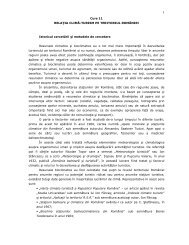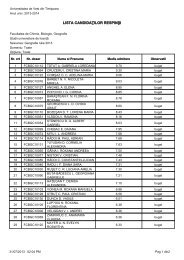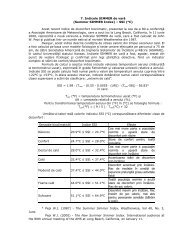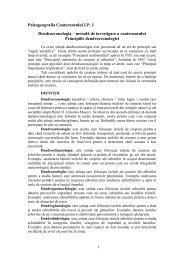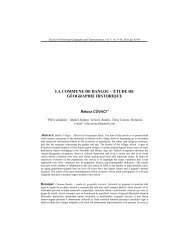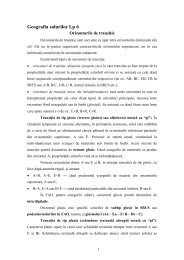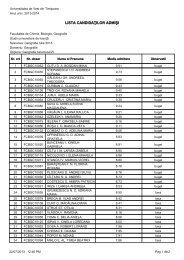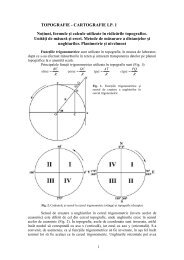the lack of interpretation at fortresses along the danube in serbia
the lack of interpretation at fortresses along the danube in serbia
the lack of interpretation at fortresses along the danube in serbia
Create successful ePaper yourself
Turn your PDF publications into a flip-book with our unique Google optimized e-Paper software.
190 ● The Lack <strong>of</strong> Interpret<strong>at</strong>ion <strong>at</strong> Fortresses <strong>along</strong> <strong>the</strong> Danube <strong>in</strong> SerbiaTurkish <strong>at</strong>tacks. When <strong>the</strong> Turks conquered it <strong>in</strong> 1459 it was <strong>the</strong> end <strong>of</strong> Serbian medievalst<strong>at</strong>e. Smederevo became <strong>the</strong> capital <strong>of</strong> Smederevo Sandzak, an important str<strong>at</strong>egicstronghold and a trade center. The Danube, <strong>the</strong> Jezava and Petijevski brook gave <strong>the</strong>Fortress its triangular shape divid<strong>in</strong>g it <strong>in</strong>to two parts <strong>the</strong> Small Town and <strong>the</strong> Big Town.Small Town is a specially fortified ruler's court surrounded by w<strong>at</strong>er whilst <strong>in</strong> <strong>the</strong> Big Town<strong>the</strong>re is a complex which consists <strong>of</strong> Archbishop's residence and residential area. TheFortress <strong>of</strong> Smederevo is an <strong>in</strong>terest<strong>in</strong>g place and for its history and architecture def<strong>in</strong>itelyworth visit<strong>in</strong>g.Ram fortress was built on <strong>the</strong> found<strong>at</strong>ions from Roman and Byzantium period. Thefortress has <strong>the</strong> shape <strong>of</strong> an irregular polygon with three closed and one open tower. It wasbuilt by Turkish sultan Bajazit II <strong>in</strong> 1483. It is situ<strong>at</strong>ed between Smederevo and VelikoGradiste. With<strong>in</strong> <strong>the</strong> fortific<strong>at</strong>ion <strong>the</strong>re are rema<strong>in</strong>s <strong>of</strong> Turkish church and old caravansary, 6centuries old. Ram fortress is one <strong>of</strong> <strong>the</strong> best examples <strong>of</strong> military architecture from Turkishperiod. Today it is <strong>in</strong> ru<strong>in</strong>s, and opened for occasional visitors. There are some plans for itsrestor<strong>at</strong>ion and tourism development, but <strong>the</strong>y are still wait<strong>in</strong>g don<strong>at</strong>ions.Golubac fortress is a monumental medieval fortress on <strong>the</strong> bank <strong>of</strong> Danube, <strong>at</strong> <strong>the</strong>entrance to Iron G<strong>at</strong>e. Golubac is a town <strong>of</strong> gre<strong>at</strong> architecture where its rich cultural,centuries long heritage is present <strong>in</strong> each corner, wall or its tower. This medieval fortress issitu<strong>at</strong>ed <strong>in</strong> N<strong>at</strong>ional park Djerdap on <strong>the</strong> high cliffs <strong>at</strong> <strong>the</strong> place where <strong>the</strong> Danube narrows.The first written documents about <strong>the</strong> Fortress d<strong>at</strong>e from <strong>the</strong> war between Serbian emperorDusan and Hungarian k<strong>in</strong>g Robert <strong>of</strong> Anjou, around 1335. Golubac had been a refuge <strong>of</strong>Hungarian rulers for a long time, but it <strong>of</strong>ten <strong>at</strong>tracted Serbian and l<strong>at</strong>er Turkish conquerors.Golubac was under Turkish rule from 1427 until 1867, when it was abandoned. It is<strong>at</strong>tractive, but only as a landscape, as it is very dangerous to climb to <strong>the</strong> fortress. It is notused for touristic purposes, even though it has enormous potential.Kladovo fortress (Fetislam) fortific<strong>at</strong>ion is situ<strong>at</strong>ed several kilometers upstreamfrom Kladovo on <strong>the</strong> bank <strong>of</strong> river Danube. The Smaller town was erected around 1524 as astart<strong>in</strong>g po<strong>in</strong>t <strong>of</strong> Turkish assaults on Erdelj. Dur<strong>in</strong>g <strong>the</strong> Austro-Turkish conflicts from 1717to 1739 <strong>the</strong> Smaller Town acquires str<strong>at</strong>egic importance, thus <strong>the</strong> Gre<strong>at</strong>er Town is erectedaround it. After <strong>the</strong> last reconstruction Fetislam is turned <strong>in</strong>to a artillery bastion. With <strong>the</strong>erection <strong>of</strong> Fetislam <strong>the</strong> Turkish defense l<strong>in</strong>e towards Hungary was completed and this l<strong>in</strong>ewas made <strong>of</strong> <strong>fortresses</strong> <strong>in</strong> Smederevo, Kulic, Ram, Golubac and Fetislam. The Turkishgarrison stayed up to 1867 when toge<strong>the</strong>r with six o<strong>the</strong>r fortified towns was handed over to<strong>the</strong> Serbian pr<strong>in</strong>ce Mihajlo. Today <strong>the</strong>re are only <strong>the</strong> rema<strong>in</strong>s <strong>of</strong> this fortress, mostly badlyma<strong>in</strong>ta<strong>in</strong>ed. (Stanojlović, 2009)Danubian <strong>fortresses</strong> <strong>in</strong> Serbia are ma<strong>in</strong>ta<strong>in</strong>ed by regional <strong>in</strong>stitutional departmentsfor protection <strong>of</strong> cultural monuments, under <strong>the</strong> M<strong>in</strong>istry <strong>of</strong> Culture, which renov<strong>at</strong>es,promotes and ma<strong>in</strong>ta<strong>in</strong>s <strong>the</strong> sites. Beside renov<strong>at</strong>ion and upkeep <strong>of</strong> <strong>the</strong> <strong>fortresses</strong>, it is <strong>the</strong>task <strong>of</strong> <strong>the</strong> govern<strong>in</strong>g body to promote <strong>fortresses</strong> and safeguard its <strong>at</strong>mosphere andconstructions for future gener<strong>at</strong>ions. The Serbian tourist organiz<strong>at</strong>ion, and local tourism<strong>of</strong>fices additionally give support, assist<strong>in</strong>g <strong>in</strong> market<strong>in</strong>g and tourism development. At <strong>the</strong>moment, none <strong>of</strong> <strong>the</strong> Danubian <strong>fortresses</strong> are on <strong>the</strong> World Heritage Site List, even though<strong>the</strong> UNESCO gave a support to <strong>the</strong> cre<strong>at</strong>ion <strong>of</strong> cultural route “Fortresses on Danube” <strong>in</strong>2009. Throughout <strong>the</strong> history a mixture <strong>of</strong> Serbian, Turkish, Hungarian and Austrian<strong>in</strong>fluences had a pr<strong>of</strong>ound <strong>in</strong>fluence on <strong>the</strong> development <strong>of</strong> forts, <strong>the</strong> region and Serbia aswhole. Even though <strong>the</strong>se <strong>fortresses</strong> no longer have <strong>the</strong>ir military significance, <strong>the</strong>y serve as



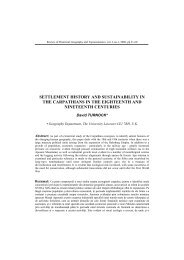
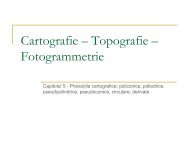
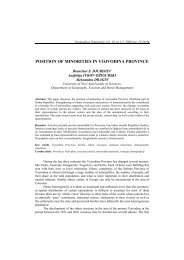
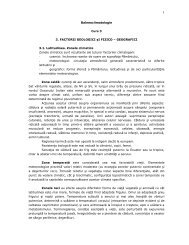
![in Romanian [pdf]](https://img.yumpu.com/51065862/1/184x260/in-romanian-pdf.jpg?quality=85)
